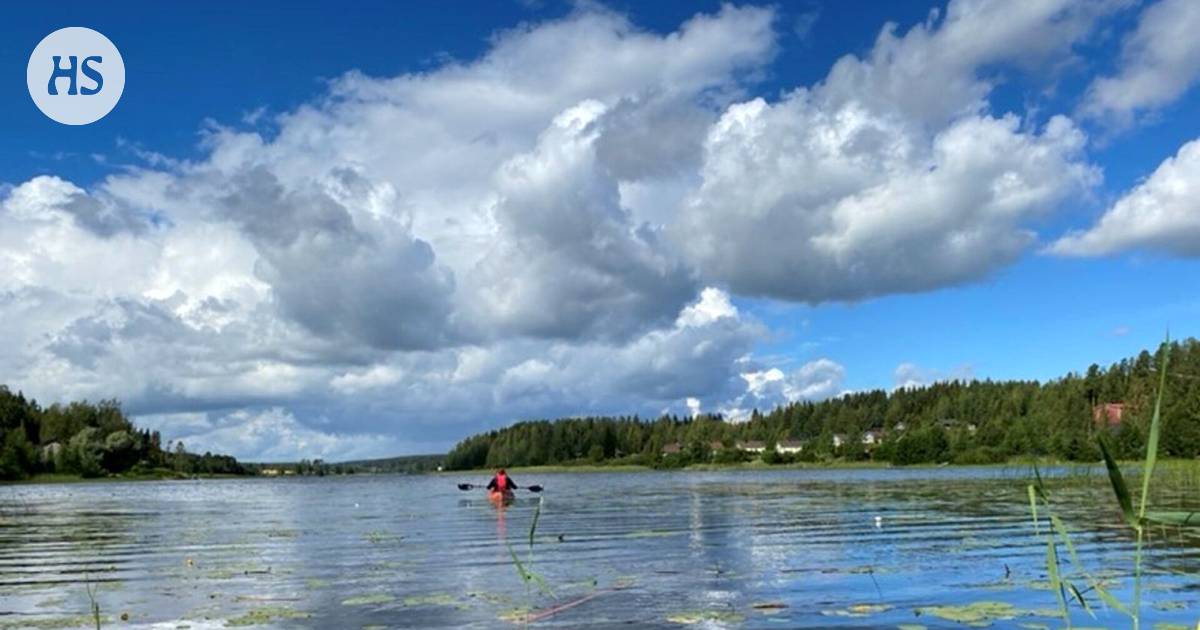Policy|Environmental policy
The largest group EPP turned against the restoration decree. According to the group’s reasoning, now is not the right time to weaken agriculture. According to the commission, there are false claims about the regulation.
Brussels
Also in Finland the controversial EU restoration regulation threatens to fail in the EU Parliament because the largest political group in the parliament, the EPP, has turned against it. In the background discussions, the representatives of the commission have been concerned about the situation because, according to them, false information is being spread about the regulation.
The Commission’s goal of halving the use of plant protection products by 2030 is also facing headwinds in Parliament.
The EU Parliament will vote on the restoration regulation possibly in its June session. The member states, on the other hand, are trying to get a general view on it at the meeting of environment ministers to be held on June 20. The general view is the common position of the member states in negotiations with the Parliament and the Commission.
Commissioner responsible for green development Frans Timmermans will visit the environment committee of the EU Parliament, which is the main handler of the regulation, on Monday. The subject is broadly all unfinished environmental regulations.
Center-right The EPP, i.e. the European People’s Party, adopted a statement at the beginning of May, in which it sets itself up to resist restoration from the perspective of agriculture and farmers.
According to the EPP, as a result of the regulation, one tenth of the agricultural land in Europe would go out of use, which the group thinks is irresponsible in the current world situation.
The Commission is particularly concerned about claims that the restoration would threaten food production. The representative of the commission says in the background discussion that the greatest threat to food production is the deterioration of natural diversity, that is, biodiversity, which restoration is exactly what we are trying to tackle.
One of the few supporters of the regulation in the EPP is Finnish Sirpa Pietikäinen (cook).
In addition to the EPP, opponents can also be found in the center-liberal Renew group, which is estimated to be around 70 percent in favor of the regulation. Renew’s MEPs, for example Mauri Pekkarinen (Centre) has said that it will do everything it can to ensure that the decree is overturned.
The parliament’s far-right groups ECR and ID are unlikely to get support for the restoration and plant protection regulations. Advocates of the regulations are the Greens, the Social Democrats and the left.
“
There are many habitat types in Finland whose condition is unknown.
Commission given a year ago restore setting presents the member countries with several binding actions that they must take to improve the state of nature.
In Finland, attention has been attracted by the fact that the commission estimates the restoration costs for Finland at 930 million euros, which is the third highest among EU member states. Half of the amount comes from improving the state of inland waters.
The large costs are partly explained by the fact that there are many habitat types in Finland whose status is unknown. The Commission has, without further ado, classified them as deteriorated and needing restoration, which is not necessarily true.
Correspondingly, the benefits received by Finland are estimated in the Commission’s proposal to be considerable, at 9.7 billion euros. The Commission’s cost and impact estimates have calculated that one euro spent on restoration would bring back benefits of 8–38 euros. A benefit would arise when, for example, yields improve.
The sleeveless impact assessments, especially regarding the benefits, have at least not improved the popularity of the regulation. Before the parliamentary elections, the decree raised a fierce political debate in Finland and also sparked opposition intermission question.
Parliamentary the great committee outlined for Finland, that the restoration decree is not valid in its presented form. Finland requires significant changes to the content and the consideration of the national forest policy, and in addition, the large committee believes that the costs should be reasonable. Impact assessments are criticized as incomplete and uncertain.
In the background papers of the government negotiations requested by HS, the Ministry of the Environment states that the negotiations on the regulation among the member countries have progressed “favorably” in terms of Finland’s goals.
Among other things, the 70-year review period that caused astonishment, where the favorable level of habitat types was compared to 70 years ago, is being removed from the regulation. This raised questions in Finland, whether, for example, the forests should be restored to the situation of the 1950s.
Finland aims for more room for maneuver for the member states in the implementation of the regulation, which is also what the Minister of the Environment does Maria Ohisalo (vihr) brought up earlier when the Council of Ministers discussed the regulation.
“
“It is easy for Swedes to understand Finland’s arguments.”
Board negotiations in the background paper, the Ministry of the Environment states that all matters important to Finland have received commendable attention in the member countries’ negotiations. The reason is that the EU presidency is now Sweden.
“It is easy for Swedes to understand the arguments used by Finland due to the similarity of the characteristics of societies and nature.”
In Brussels, nature organizations have raised doubts as to whether Sweden can be a so-called honest mediator in the negotiations of the restoration regulation, i.e. remain neutral, as the country holding the presidency should be. In both Sweden and Finland, the forest industry is very critical of the restoration regulation, which has been suspected to be reflected in the negotiations.
If the regulation will pass the tripartite negotiations of the member states, the commission and the parliament and will enter into force according to the schedule in the spring of 2024, all member states must make a national restoration plan.
The plan also applies to urban nature, where more green areas should be added. In Finland, the target would be 63 municipalities.
Finland has criticized the Commission’s proposal that green areas should be increased by the same percentage in each member state, despite the fact that the starting levels are very different.
There are already a lot of green areas in the cities in Finland, and in addition, the cities are large in area and there are not as many built-up areas relative to the area as in the cities of Central Europe.
#Environmental #policy #countries #forced #restore #nature #group #turned #sledge #agriculture








